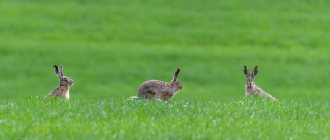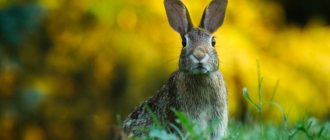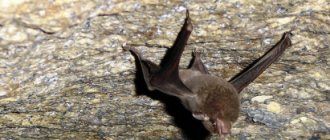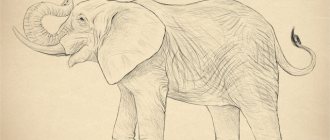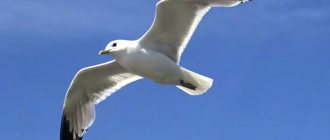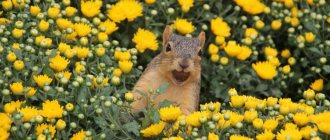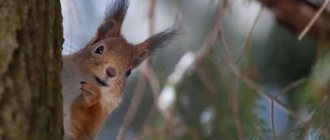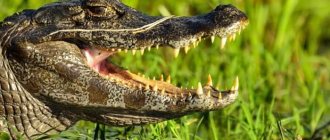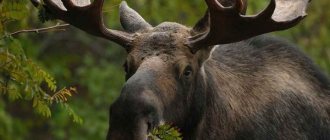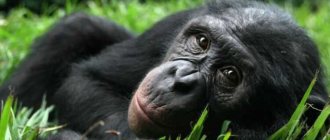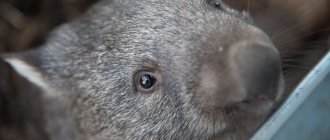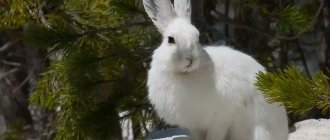The hare is a small mammal that has recently belonged to the order Lagomorpha and the family Lagoraceae. Before this, they were considered a type of rodent. The international scientific name of the genus of hares is Lepus (lat.). Hares only at first glance seem to be harmless animals. Thanks to powerful legs and long claws, they are able to withstand danger. Since ancient times, this furry animal has been a desirable prey for hunters because of its dietary meat and rare fur.
Hare - characteristics, description, and appearance of the animal
The hare has a slender, slightly elongated body, up to 68-70 cm long.
The hare has long locator ears, 9 - 15 cm long. The hearing of this animal is more developed than other senses. Sound can be picked up by one ear independently of the other, which facilitates the animal's auditory orientation.
A distinctive feature of the hare is the long foot of its hind legs, which gives it the ability to run away from predators (fox, owl, wolf) at a speed of 80 km/h, abruptly change the direction of movement and jump to the side. A small animal can easily climb to the top of a hill, but when it comes down, it rolls head over heels.
The hare's sweat glands are located on the soles of its paws. It is almost impossible for a predator to smell a lying animal.
Hares molt in spring and autumn.
The stomach of lagomorphs is divided into two sectors. One section is for fermenting food, the other is for digesting it.
Interesting Facts
- In Russian folk tales, the hare is called oblique, although the animal does not suffer from strabismus. He received this nickname due to his ability to loop while running. Slanting tracks help him escape from pursuit.
- Rusak is not as cowardly as they say. He is quite capable of taking care of himself. Among the hares there are brave souls who successfully fight off attacking eagles with their hind legs.
- Once upon a time, a small hare lived for a long time with a domestic dog, which taught its “adopted child” to rush at other people’s dogs.
Is a hare a rodent or not?
Lagomorphs differ in blood composition from rodents.
Another distinctive feature is the structure of the teeth. Hares have incisors in the upper jaw, 2 pairs on each side. The inert palate is a bridge connecting the right and left molars. In rodents it is in the form of a complete bone platform. There are no gaps between the protruding parts of the upper and lower teeth, allowing for better processing of food.
Agouti, the so-called humpbacked or golden hare, is considered a rodent.
Hares color
The color of a hare is directly related to the season. In summer, its coat can be brown, reddish-gray, or brown. The color of the animal is uneven, since the fluff under the fur has a dark shade. There are also small inclusions. The fur on a hare's belly is always white. In winter, the fur of the fluffy animal becomes lighter, but only the white hare’s is impeccably white. The tips of the ears of lagomorphs are black all year round.
Enemies
The hare has plenty of enemies:
- wolves,
- foxes;
- lynx;
- dogs;
- eagles;
- owls;
The best defense against them is good camouflage and fast running. Thanks to its protective gray-brown color, the hare can hide even in white snow - in the middle of a field it will look like a stump or a hummock dusted with snow.
Hares are often saved by their speed: during a chase, they cover up to 70 kilometers in an hour. Brown hares can swim and are able to swim across the river to escape persecution.
How many years does a wild hare live?
Males live on average 5 years, females up to 9 years. A tamed hare lives much longer.
The type of eared animal has an impact on the number of years lived. So, a white hare can live up to 17 years. Such cases are unique. Browns live much shorter lives, usually 5 years. Very rarely live to 14 years.
The American hare lives on average 7-8 years. The black-tailed hare lives up to a maximum of 6 years, but often representatives of this species die much earlier from disease or predators. The lifespan of an agouti (or, as they are also called, a golden or humpback hare) can reach 20 years.
The bearded seal lives for approximately 30 years; males often only live to be 25 years old.
Types of hares
The genus of hares consists of a dozen subgenera, each of which is divided into species.
White hare
White hare (Latin: Lepus timidus). Body length is about 44-65 cm; weight 1.6-4.5 kg. A distinctive feature of this white hare is its ability to masterfully camouflage itself. The hare has a white fur color in winter; in summer the fur becomes gray. The white hare is the target of many sport hunters. Habitat: Russia (including the Arctic); China, Mongolia, northern Europe, South America.
Brown hare
Brown hare (Latin: Lepus europaeus). The largest representative of lagomorphs, has brown fur. The body length is 68 cm, weight up to seven kilograms. The fur shines and curls a little. The tail and ears are larger than those of the hare. The hare, one might say, is a steppe hare. Habitat: Europe, Kazakhstan, Turkey, Transcaucasia, Arabian Peninsula, North Africa.
Antelope hare
Antelope hare (Latin: Lepus alleni). The body length is 45-60 cm. A distinctive feature of the antelope hare is its impressively sized ears, up to 20 cm. They help normalize the animal’s heat exchange in hot climates. This species lives in northwestern Mexico and American Arizona.
Chinese hare
The Chinese hare (Latin: Lepus sinensis) is distinguished by its miniature size. The body length is 30-45 cm, weight is within 2 kg. Fur color varies from chestnut to red. The coat is short and harsh in texture. Habitat: China, Taiwan and Vietnam; inhabits mainly elevated areas.
Tolai hare
Tolai hare (Latin: Lepus tolai). Outwardly it has similar features to the hare, only noticeably more compact in size. Body length 39-55 cm, weight 1.5-2.8 kg. The fat hare's limbs and ears are larger than those of the brown hare. Lives in Central Asia, Kazakhstan, Northeast China and Mongolia. Almost everywhere in Russia.
Yellowish hare
Yellowish hare (Latin: Lepus flavigularis). Body length 60 cm, weight 4 kg. The ears and legs are large. The yellowish hare has an original ear color. From their base to the back of the head there are two black stripes, the sides are white. Hare's habitat: the coast of the Gulf of Tehuantepec in Mexico. Terrain: Coastal grassy dunes and open grasslands. Stays awake in the dark.
Broom hare
Broom hare (Latin: Lepus castroviejoi). The body length of a hare of this species is 45-65 cm, weight is from 2.6 to 3.2 kg. The color of the hare is black-brown, with small white patches. It lives in Spain and is listed in the Red Book of this country. The species is widespread in areas with little vegetation. In many characteristics, the broom hare is similar to the brown hare.
Black-tailed hare
Black-tailed (California) hare (Latin: Lepus californicus). Body length 47-63 cm, weight 1.5-3 kg. A distinctive feature of the species is its long ears and massive hind legs. The fur on the upper part of the body is gray-brown in color. The back of the animal is decorated with a black stripe. The population of these lagomorphs is most impressive in the western United States and Mexico. The black-tailed hare is a loner.
Manchurian hare
Manchurian hare (Latin: Lepus mandshuricus). The body size of the Manchurian hare is 40-55 cm, weight 1.3-2.5 kg. The legs, tail and ears are relatively short, which gives the Manchurian hare similar features to the wild (European) rabbit. The fur is hard and bristly. The color of the coat is brown, uneven, with gray patches. Along the back there is a dark stripe of longer hair. It is found in the south of the Russian Far East, in the Chinese region of Manchuria and in the north of Korea. We can say that this is a forest hare, preferring deciduous forests with dense bushes.
Tibetan curly hare
Tibetan curly hare (Latin: Lepus oiostolus). The body length is 40-58 cm. Weight is 2.3 kg. The fur of this animal has a yellowish tint, and the fur on the back is slightly wavy. Habitat: China, India, Nepal. Terrain: highlands of Tibet.
South American golden hare
Agouti (Latin: Dasyprocta) or South American golden hare (humpback hare). This animal belongs to the order of rodents and is a relative of guinea pigs. Agouti is also popularly called the golden (or golden) hare. This animal has a body length of 50 cm and weighs about 4 kg. It received its second name due to its golden color. The humpback hare is widespread in Central and South America, from Mexico to Brazil. Agoutis are very good swimmers.
domestic hare
The hare, unlike the rabbit, which is a burrowing animal, needs space and a lot of movement. If desired, hares can be bred at home, following certain rules.
Features of keeping a hare at home:
- The hare needs a spacious cage or enclosure.
- Walking around the apartment. Until the age of 1 month under close supervision, from 1 month free walking.
- The hare must be vaccinated and dewormed.
- The little bunny should be immediately taught to go to the toilet; diapers or dry grass should be used as litter for the tray. Granular litter cannot be used.
Hares are very sociable animals, living in an apartment, they require constant interaction with humans, games, and attention. But these animals should not be held in your arms all the time; they do not like hugs.
Features of feeding a hare at home:
- Hare's milk is very fatty in composition, up to 20%, so it is impossible to feed a hare with cow's milk or human infant formula. It is recommended to give bitch and cat milk substitutes every 3-4 hours.
- You cannot sweeten milk for rabbits.
- From the age of two weeks, in addition to milk, you need to give green grass, leaves and twigs.
- From one and a half months, it is necessary to completely switch the teenager to solid food: green grass, twigs, berries, fruits.
- From two months of age, add grain-free ready-made food to the hare's diet.
By following all the recommendations, the wild animal will take root in a human home and become a full member of the family. A funny pet hare can become a friend for children.
You cannot release an already tamed hare into the wild; it will not survive.
Giant Rabbit (Flanders)
One of the most amazing representatives of lagomorphs is the Flanders, or Belgian giant. This is an industrial breed of rabbits. The body length of adult individuals is 67 cm, weight 7-10 kg. The coat is thick, the color is hare-gray, yellow-gray, dark gray, iron-gray. The breed began to be bred in 1952.
Sea hare seal
The bearded seal, or bearded seal, belongs to the family of true seals. The body length is 2.5 meters. In winter, the weight is 360 kg. The bearded seal lives in the shallow waters of the Arctic Ocean and adjacent waters of the Atlantic and Pacific oceans. Representatives of northern peoples make household items from seal skin. The pregnancy of a female sea hare lasts a year, one calf is born, with a body length of 120 cm. The ability to reproduce appears at the age of five years.
Character and lifestyle of the brown hare
Commitment to a habitat, once chosen, is very characteristic of the brown hare , and the description of the lifestyle of these animals should begin with the remark that these animals are not prone to migrations and long journeys.
Inhabiting small areas (no more than 50 hectares), they settle there for a long time. Perhaps only those of them that live in the mountains descend to their foothills in winter, and when the snow melts, they rise back again.
They can only be forced to leave their home by a sharp change in weather conditions, environmental disasters and other emergency circumstances. Animals prefer night life to day life.
And during daylight hours, animals hide in their burrows, which are usually located near bushes and trees. Sometimes the animals also occupy the abandoned homes of other animals: marmots, badgers and foxes.
Like all representatives of the genus of hares, hare moults from head to limbs twice a year. Spring and autumn molting, which last from 75 to 80 days, completely changes the appearance of the brown hare , which helps the animals merge with the surrounding nature, depending on the surrounding landscapes of different seasons, and be less noticeable to their enemies, from which only long legs.
The ability to run very fast is another advantage of these animals. And the maximum speed of the brown hare , which it can develop in extreme conditions on good and hard soil, reaches up to 70-80 km/h. In the genus of hares, this is a kind of record.
In the speed of its legs, the hare is significantly superior to its fellow hare, the white hare, moving much faster than it and jumping much further. However, hare are less adapted to adverse weather conditions, and often their numbers are significantly reduced during harsh winters.
The brown hare , like the white hare , has long been a favorite object of commercial and sport hunting. And a great many of these animals are killed every year for their tasty meat and warm skins.
Where does the hare live?
Hares are land animals; they cannot swim or climb trees. Some species love space, spaces with little vegetation. Other species belong to the forest hares and inhabit areas with dense thickets. Hares can live separately; some species live in colonies and build burrows. The white hare lives in the tundra, rarely in forest and forest-steppe zones. The humpbacked hare rodent is a resident of the tropics and savannah. Lagomorphs inhabit the entire globe. Recently, they have been introduced to Australia, South America, Madagascar, and Southeast Asia.
What does a hare eat?
Hares belong to mammals and eat food of plant origin.
Brown hare food:
| Season | Food |
| Summer | Shoots of bushes, trees and plants. Foliage, stems, and roots are eaten. |
| August | Vegetables from the fields, seeds; wild plants |
| Autumn | Hares eat fruits and berries in the forest |
| Winter | Dried grass; vegetable residues; snow seeds; tree bark |
| Spring | Fresh grass |
White hare diet:
| Season | Food |
| Summer | The white hare feeds on the green parts of plants; field oats; blueberries, mushrooms; horsetails |
| Autumn | Small branches of bushes |
| Winter | Bark of trees and shrubs, shoots; rowan fruits; hay and cones. Hares eat from trees: maple, birch, aspen, oak, willow |
| Spring | Green parts of plants; grass; the soil |
The humpback hare feeds on fruits and other parts of plants.
The bearded seal eats benthic invertebrates and bottom fish: flounder, cod, and goby.
Nutrition
Brown hares are typical herbivores, eagerly eating a variety of grains, buckwheat, sunflowers, chicory, alfalfa, clover, rapeseed and dandelions. At night, in search of food, wanting to satiate its stomach, the brown hare travels up to several kilometers, testing the strength of its long legs.
Settling on agricultural lands, these animals can greatly damage the harvest of vegetable gardens, orchards and winter crops, actively eating human-grown grains and melons, vegetables and fruits. The proximity of Russians can be so unpleasant to human civilization that it often becomes a real disaster.
And in some countries, for example, in Australia, hare are even declared to pose a serious danger, pests. In winter, in the absence of adequate nutrition, the brown hare is content with gnawing the bark, often bringing not only bushes, but even large trees to a disastrous state.
These animals prefer to feast on broom, hazel, oak or maple, while white hares usually choose aspen or willow for their meals (and this is another difference between these bright representatives of the genus of hares).
Tearing up the snow with their paws, the hare diligently dig out plant food and tree seeds from under it. And other animals, for example, partridges, which are not able to clear snow on their own, often manage to benefit from the fruits of their efforts.
In the spring, hares actively eat young shoots of plants, their leaves and stems, often damaging the roots of shrubs and trees that are just beginning to grow, and in the summer they eat their seeds.
Reproduction of hares
In nature, hares can form pairs, but an isolated lifestyle is not uncommon. A female hare can give birth three times a year, with 5-10 hares in each litter. The gestation period is 50 days. Hares have high fertility. Cubs are born with fur and can see and walk. In the first seven days of life, rabbits need milk. But by the third week they are completely adapted to plant foods. Puberty occurs at the age of 7-11 months.
